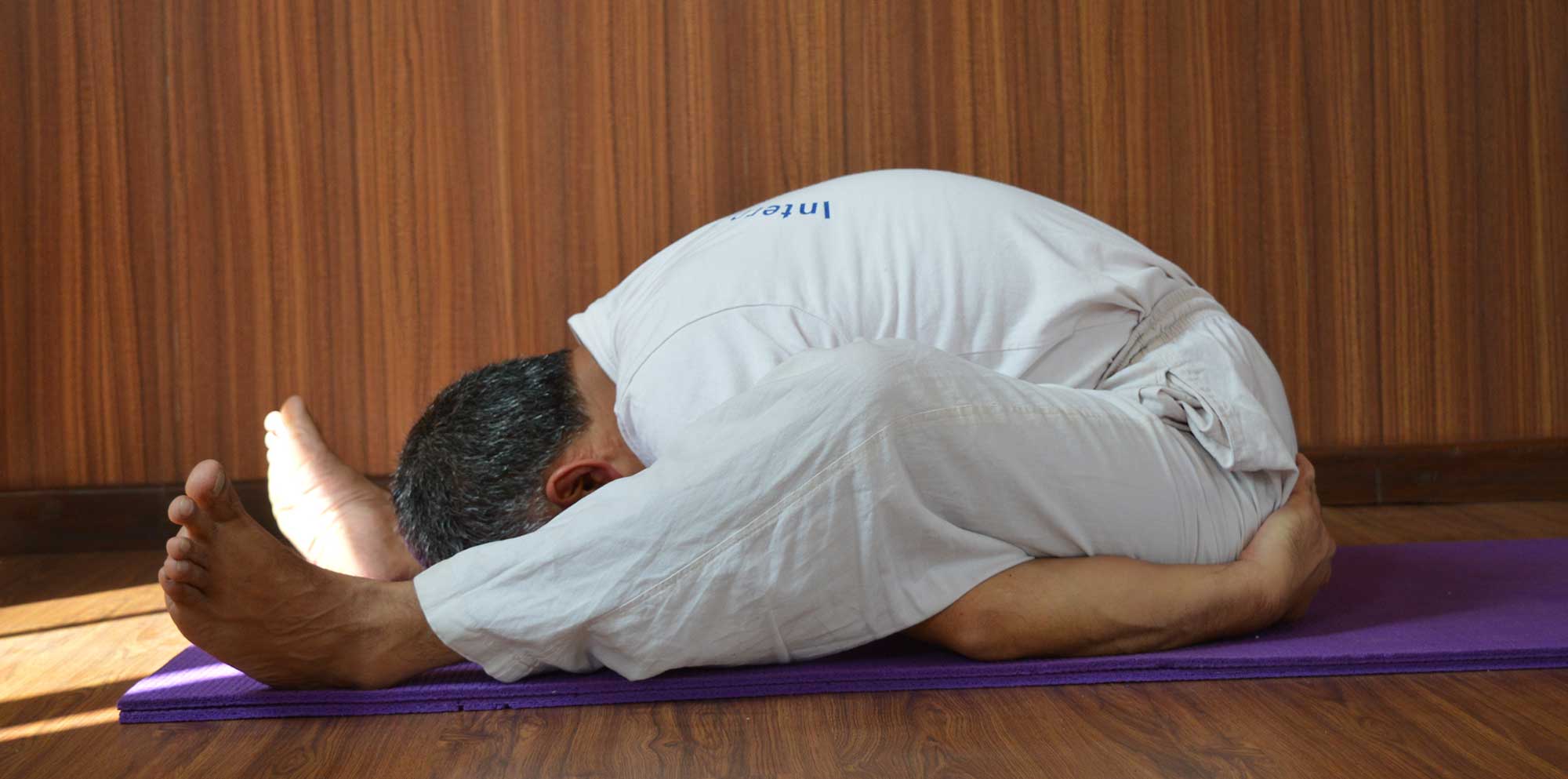
22 Dec 2020 HYN Himalayan Yoga Academy
“Gulphau cha vrishanasyaadho vyutkramena samaahitau;
Rijukaayashirogreevam koormaasanamiteeritam.!
In the Koormaasana/Kūrmāsana (कूर्मासन), the legs are crossed to make the heels come under the gluteal. The Koormaasana must have the oval shape proper for a mirror. The height of it has to be four aṅgulas, its breadth twelve, and it should be provided with the face and feet of a tortoise, these latter being one muṣṭi or seven aṅgulas in girth. Its name comes from the Sanskrit Koorma, which means “turtle” or “tortoise,” and asana, which means “posture” or “seat.” It is so called because the asana resembles the shape of a tortoise in the full pose. Koormaasana may also be known as the tortoise pose.
Koormaasana is a seated yoga asana in which the body folds at the waist and the arms slip under the legs. It is recommended to stay in the pose for 30 to 40 seconds and roughly five to 10 breaths. This pose is designed to create inner awareness and relaxation. As a result, Koormaasana is touted as beneficial for relieving stress and improving concentration.
Variations of Koormaasana
Supta koormaasana – Sleeping tortoise pose, a deeper version of the pose with the legs wrapped around the neck and the hands clasped at the lower back.
Ardha koormaasana – Half tortoise pose, a gentler version that starts in vajrasana, then the body folds and the arms extend forward, resting on the ground.
Uttana koormaasana – Upside-down tortoise pose, which can mean both a more challenging and a more relaxed version of the pose. In the challenging version, the pose balances on the buttocks with the arms and legs off the ground and entwined. An easier version starts in vajrasana, and then the body folds until the head rests on the ground and the arms extend backward, resting on the ground.
Steps of Koormaasana (Tortoise Pose)
- First, sit comfortably in Staff Pose (Dandaasana) place your hands on the floor close by your hips.
- Now press your thighs into the ground or floor, your feet should flex, and try to lift your chest.
- Keep your legs to the corners of the mat; keep your knee wide as your Take a couple of breaths here.
- Now bend your knees with keeping your feet flexed.
- Place them nearer to your hips. Expand your chest in forward down and keep your arms forward down between your legs.
- Bend your legs significantly all the more, with the goal that you can put your shoulders one by one under your knees. (If this is difficult for you then keep going on with forwarding bend)
- Stretch your arms out to the sides.
- After that try to roll your thighs in the inward direction and keep your inner heels extended, without making pressure in the feet.
- Stretch the front part of your chest and collarbones in forwarding direction and keep them down with the assistance of the weight of your thighs on the shoulders or upper arms.
- Try to push inner heels down and forward to extend and straight your legs, at that moment try to keep your inner thighs in contact with your side ribs.
- Breathe in and keep on extending your arms and mid-section (chest) out to your sides.
- Breathe out to extend your spine more distant forward. Try not to constrain your legs, breathe out and relax to release the pose.
- On the off chance that you feel torment under your knees, take your arms marginally forward. Stay for a couple of breaths, and then gradually leave the posture. Rehash a couple times.
(If you are uncomfortable, then don’t interlock your fingers behind your back; just do this Asana with a forwarding bend with your shoulders under your thighs. Once you are comfortable in this, then try this asana with interlock fingers behind your back.)
Benefits of Koormaasana (Tortoise Pose)
- It stretches your legs, back, shoulders and chest also.
- Improves the functions of the respiratory and digestive systems.
- It lengthens the back muscles.
- The organs in the midriff (abdomen) are stimulated during this Asana.
- The stance helps you to spread out both your shoulders and your hips.
- A good pose for an anxiety buster.
- The spine is stretched longer during the act of this yoga asana.
- Beneficial in Asthma, constipation and flatulence
- Useful in sleeping disorder like Insomnia.
- Beneficial in the problems related to the back or spine.
Practical Note
Don’t try to overstrain your muscles while performing this posture. Breathe in and out the way you would under ordinary circumstances while you are in a definite position of this stance. Avoid this Asana in case of any shoulder, hip, or arm injury.
(Consult a doctor and yoga expert before starting any Asana or Pranayama; don’t go beyond your capabilities during Asana.)
